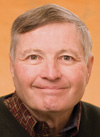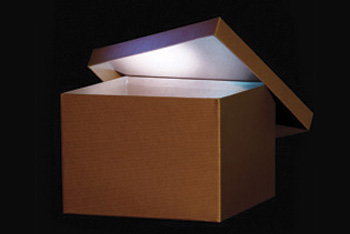April 17, 2013 – Wisconsin’s adoption of the Daubert standard for expert testimony through 2011 Wisconsin Act 2 was greeted with equal measures of delight and dismay.
The proponents argued it would stem a perceived tide of junk science and frivolous lawsuits. Opponents, including the majority of attorneys, felt it would introduce a potentially cumbersome and expensive gatekeeper function, despite the absence of any evidence that Wisconsin’s courts were struggling with suspect expert testimony.
After canvassing a number of judges and lawyers, it appears Daubert has not proven to be the game-changer either side envisioned. The number of challenges seems quite limited, and the reception by the judicial community has been predictably cool.
 Mike Riley (U.W. 1973), an attorney at Axley Brynelson LLP, Madison, practices in the areas of personal injury, insurance, mediation and arbitration. He has lectured and written extensively on matters relating to the settlement and trial of personal injury claims.
Mike Riley (U.W. 1973), an attorney at Axley Brynelson LLP, Madison, practices in the areas of personal injury, insurance, mediation and arbitration. He has lectured and written extensively on matters relating to the settlement and trial of personal injury claims.
This article addresses what has happened to date and why. It also offers some suggestions as to when Daubert motions should be addressed and how lawyers and courts should approach those motions.
What Has Happened and Why?
First, and perhaps foremost, Wisconsin has a long tradition of dealing with challenges to experts by first vetting the expert’s qualifications and then permitting respective counsel to deal with the expert’s testimony, both through cross-examination and by offering expert testimony of their own.
Wis. Stat. section 907.02 incorporates the traditional standard, stating that a person qualified as an expert by knowledge, skill, experience or education may offer opinions if scientific, technical or other specialized knowledge will assist the trier of fact.
The Daubert standard – the product of three U.S. Supreme Court cases1 – focuses on whether testimony is the product of reliable principles and methods, reliably applied, and was engrafted onto section 907.02 by legislative action in 2011.
Daubert was spawned in federal courts in the context of cases which dealt with highly technical scientific testimony. The seminal cases involved experts who were testifying based on scientific principles and testing specific to the litigation before the court, and often tailored to the litigation.
Cases of that sort are certainly less common in our state courts. The majority of expert opinion testimony in our cases involves either medical testimony, or testimony on subjects which are familiar to many judges. Given that reality, and the tradition in our state, it is unsurprising that Daubert has had limited impact on litigation to date.
The challenges, limited in number, have involved criminal and family as well as tort claims. In a handful of cases, an effort has been made to challenge expert medical testimony by a treating physician. The common denominator has been a notable lack of success for these challenges.
Addressing a challenge to a treating physician, one Wisconsin trial court rejected the challenge, noting that Daubert was not well suited to determining the admissibility of medical testimony as opposed to more arcane scientific and technical testimony.
A Federal Court of Appeals reached the same conclusion, holding that because the Daubert factors are more appropriate to hard science methodology, they are generally inappropriate for use in making a reliability assessment of expert clinical and medical testimony.2 In Cooper and Pogge v. Nelson and Company, 211 F.3d 1008 (7th Cir. 2000), the court held that the diagnostic tool of examination accompanied by physical history as related by the patient was an acceptable methodology under Daubert.

When to Make a Daubert Motion
While Daubert motions are akin to motions in limine, they are potentially far more disruptive. If an expert’s testimony is critical to a plaintiff’s liability case, a successful Daubert challenge could be dispositive. The same could be said of testimony by a pivotal defense expert.
Even in cases where a Daubert ruling is not dispositive, it may dramatically alter the landscape of the case. Because of this, Daubert motions should be addressed as early in the litigation process as practical. While discovery will usually be essential to afford a basis for a Daubert motion, scheduling the motion at the same stage in the proceedings as dispositive motions makes a good deal of sense. Motions in limine are often heard within a few weeks of the trial date. Daubert motions should be heard well before that.
The timing of the Daubert motions should be taken up at the initial scheduling conference. Because granting a Daubert motion might effectively prevent a party from pursuing a claim or defending against one, the parties should also address what will occur if an expert is barred.
The case law in our state has generally supported permitting additional or substitute expert testimony, so long as the opposing side is afforded a reasonable opportunity for discovery and is not prejudiced by permitting such testimony. The decision is within the discretion of the court, but it would be prudent to address the issue at the scheduling conference.
How is the Daubert Motion Made?
Because Daubert is relatively new to our state, there has been little opportunity to set ground rules or establish a framework for dealing with Daubert motions. As in any motion, the moving party should be required to provide a sound factual and legal basis for the motion. Rather than simply using Daubert as an incantation, the moving party should be required to demonstrate a Daubert analysis is appropriate.
The movant should also explain with some specificity how the expert’s testimony is either based on principles or methods which are unreliable or how the witness has failed to reliably apply those principles and methods to the facts of the case.
The parties seeking to present the expert would then be obligated to respond and provide the court with satisfactory proof that the expert testimony should be admitted. As always, the party offering the testimony must demonstrate that the expert is properly qualified and that his testimony will assist the trier of fact. The proponent of the testimony would also need to meet the specific challenge raised by the moving party.
Burden of Proof
The question of who ultimately bears the burden of persuasion on a Daubert motion has not been ruled on by the appellate courts of our state.
But, in my view, the burden of demonstrating an expert’s qualifications and persuading the court that his testimony will assist the trier of fact should rest with the proponent of the testimony. Where the opposing party seeks to bar such testimony based on a specific Daubert challenge, the burden should rest with the party presenting the motion.
Our courts and the parties to litigation share a mutual interest in ensuring that testimony which is reasonably reliable and likely to be helpful to jurors is not barred.
In the end, a trial should be a search for the truth, and Daubert ought to be used to promote, not obstruct, that goal.
Endotes
1 Daubert v. Merrell Dow Pharmaceuticals Inc., 509 U.S. 579 (1993); General Electric Co. v. Joiner, 522 U.S. 136 (1997); Kumho Tire v. Carmichael, 526 U.S. 137 (1999).
2 Moore v. Ashland Chemical, Inc., 126 F.3d 679 (5th Cir. 1997).
Related
